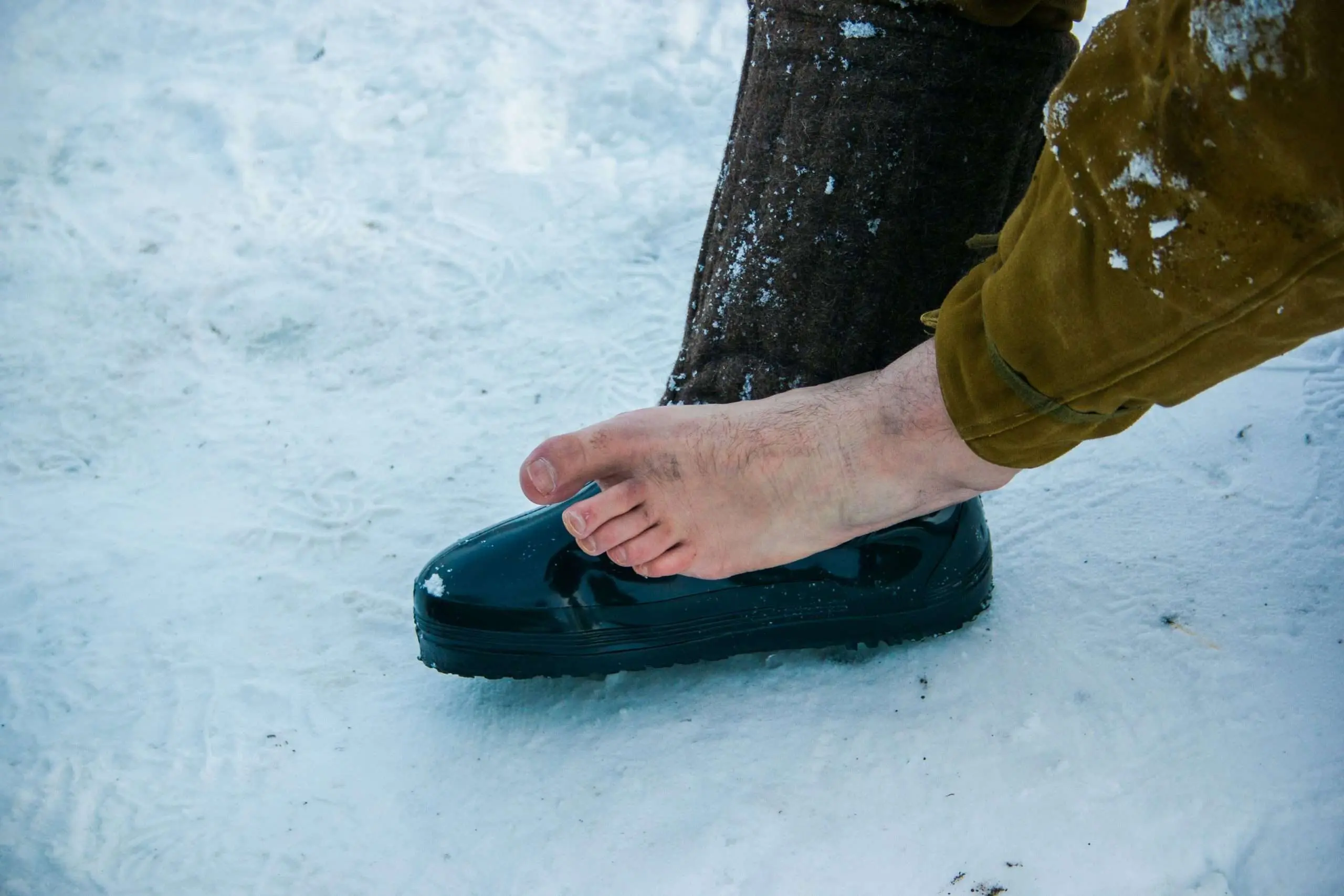
Often linked to mountain climbing and other winter activities, frostbite can also occur in anyone exposed to the cold.
Of course, most Quebecers naturally anticipate the onset of winter with some exasperation, but many have no clue about the extent of the damage frostbite can cause.
The extremities of the body are particularly susceptible to drastic drops in temperature, therefore special attention should be paid to the feet.
Read on to learn about medical treatments for frostbite on the toes and feet.
The degrees of frostbite
Frostbite, as a true cold burn, is usually treated according to the severity of the lesions it causes.
Two types are generally distinguished: superficial frostbite and deep frostbite.
Superficial frostbite results in redness and the appearance of small blisters on the skin.
Deep frostbite, on the other hand, numbs the skin and paves the way for more damaging lesions such as the death of tissue.
The degree of frostbite is directly affected by the amount of time the skin is exposed to the cold.
In any case, frostbite is a real medical emergency and immediate action should be taken to mitigate the consequences.
The therapeutic foot bath
After adequate precautions have been taken to warm the foot, subsequent treatments are aimed at reducing the incidence of possible complications.
We strongly recommend the administration of foot baths with the addition of antiseptics.
Among other things, this type of treatment allows you to:
- Clean wounds that occur when blisters burst open
- Kill germs and bacteria before they cause infections
- Promote the natural debridement of damaged tissue
Soaking the feet also helps the lesions heal, in the days following the discovery of frostbite.
The prescription of antibiotics
Because frostbitten skin sometimes cracks, the affected areas may be susceptible to infections.
It can be exposed to contaminants such as:
- Staphylococcus aureus
- Streptococcus
- Gram-negative bacilli
Therefore, to prevent the situation from degenerating, the attending physician sometimes must prescribe antibiotics to protect the affected limb.
The foot bandage
The primary purpose of the bandage is to protect the foot from infection when deep frostbite causes lesions.
This treatment, which is part of the foot care range, allows the treating podiatrist to choose the most appropriate bandage and apply a topical ointment if necessary.
The therapeutic dressing intended for frostbite on the foot traditionally consists of sterile gauze compresses and special bandages.
Sterilized cotton balls can also be placed between each toe so as not to aggravate the lesions, if they were affected by the frostbite.
A protective splint can then be fixed to the foot.
Debridement of the damaged skin
The damage caused by deep frostbite to the foot goes far beyond tissue damage; it also affects the circulatory system.
This occurs when the freezing of the foot leads to the formation of clots in the small blood vessels that supply blood to the foot.
Without timely treatment, this obstruction of blood flow can develop into a complete blockage. Under oxygen deprivation, the tissue can then die.
The physician must thus surgically remove the damaged skin cells to prevent damage to the surrounding structures during the thaw.
Although this preventive measure is radical, it helps to prevent the occurrence of diseases such as:
- Gangrene of the foot and leg
- Severe infection
Partial or complete foot amputation
An amputation can save a person’s life, even though it does have major consequences on their motor skills.
Of course, this last resort solution is exclusive to the most serious situations only, where the rest of the body is threatened by the spread of gangrene.
Here are the types of amputation that can be performed on the foot:
- Transmetatarsal amputation, in which the surgeon removes part of the forefoot from the middle of the metatarsal bones
- Chopart amputation, in which the anterior part of the calcaneus and talus are cut through
- Lisfranc amputation, in which all the toes and metatarsals are removed
- Syme amputation, in which the entire foot is severed with an incision in the joint that connects it to the leg
The amputation is never performed by the podiatrist, but as a foot health professional, they may be called upon to intervene later.
Their expertise also proves handy when it comes to meeting the patient’s new orthopedic needs.
To make life easier for an amputee, the podiatrist’s recommendations focus on:
- Orthopedic shoes that better fit the prosthesis
Custom-made foot orthoses, which are more likely to be used in the context of a partial foot amputation
PiedReseau – Learn more
Want to learn more about frostbite treatment for the foot? Our website is full of useful information!
But even if our section dedicated to treatments does not lack invaluable resources, nothing is better than a real consultation in a podiatry clinic.
Take care of your feet – they are precious!